Ai Weiwei transforms Paris’ Le Bon Marché into a visual playground

For Émile Zola, the emergence of department stores in the latter half of the 19th century Paris conjured up cathedrals of capitalism. For Ai Weiwei some 130 years later, Le Bon Marché has become a playground for exposing original, traditionally crafted works.
An exhibition within a retail space is a first for the fearless Chinese artist, whose show at the Royal Academy of the Arts ended just last month. Le Bon Marché approached him over a year ago with an invitation to fill the windows and the grand central atrium with creatures and multi-layered scenes, some more familiar than others. Those within the store borrow from Shan Hai Jin ('Classic of the Mountains and the Seas'), a book of myths populated with such hybrids as a turtle-fish, a fish-rooster and a serpent spirit with a human head. Outside, meanwhile, are scenes that attest to Weiwei’s own narrative: surveillance cameras, his notoriously upward-pointing middle finger, his bicycle (which, along with a bottle rack, serves as a nod to Marcel Duchamp) and the three-legged stools from his Venice Biennale installation in 2013. Whereas certain figures expose frameworks of bamboo, others are sheathed in delicate white silk. The production took place in Shandong, where artisans employed traditional kite-making techniques.
According to Le Bon Marché’s artistic director, Frédéric Bodenes, ten members from Weiwei’s team and five from the store’s began the installation on 5 January and assembled the theatrical installation, 'little by little' and mainly during the evenings. A dragon symbolising hope, reassurance and energy was completed not long after the artist arrived in Paris, his first visit since 2003.
In a short film projected across from the dragon installation, Weiwei explains how he set out to link the mythic tales at the heart of Chinese culture with his cultural impressions of Paris, in order to arrive at a contemporary, personal statement. 'What is created is about our new look of the new century,' says the artist in a conversation with Wallpaper*. 'It’s about all the possibilities of imagination.'
The show falls during the store’s 'White Sale', an annual event started by founder Aristide Boucicaut (as Bodenes tells it, the theme of white was the store’s sole request to Weiwei). To see the artist's work against the backdrop of markdowns – not to mention all the multi-brand signage – risks being both visually and conceptually jarring. But the fact that the show’s title, 'Er Xi, Air de Jeu' – meaning 'playground' in both languages – suggests how the exhibition functions more as a folly than a platform to provoke. For Weiwei, who became free to travel in July when Chinese authorities finally returned his passport, displaying his work within a store represents a creatively open-minded idea – one that he was enthusiastic to accept.
'Here, you have a society that has matureness in both the commerce and the culture. And it can be mixed with a much more sophisticated language. China is developed imbalanced-ly. It doesn’t have social critic[ism] or aesthetic discussion or philosophical thinking. If a society misses these parts, development is dangerous because it’s not balanced and doesn’t know where to go.'
Moreover, he insists there’s no incongruity in showing artistic work within a space devoted to luxury consumption – perhaps because, in this case, so many of the works exist in an interpretative, poetic realm. 'I take a readymade like Duchamp’s and make a little taste and then it becomes something else,' he says. 'I think you can use these [ideas] to your benefit.'
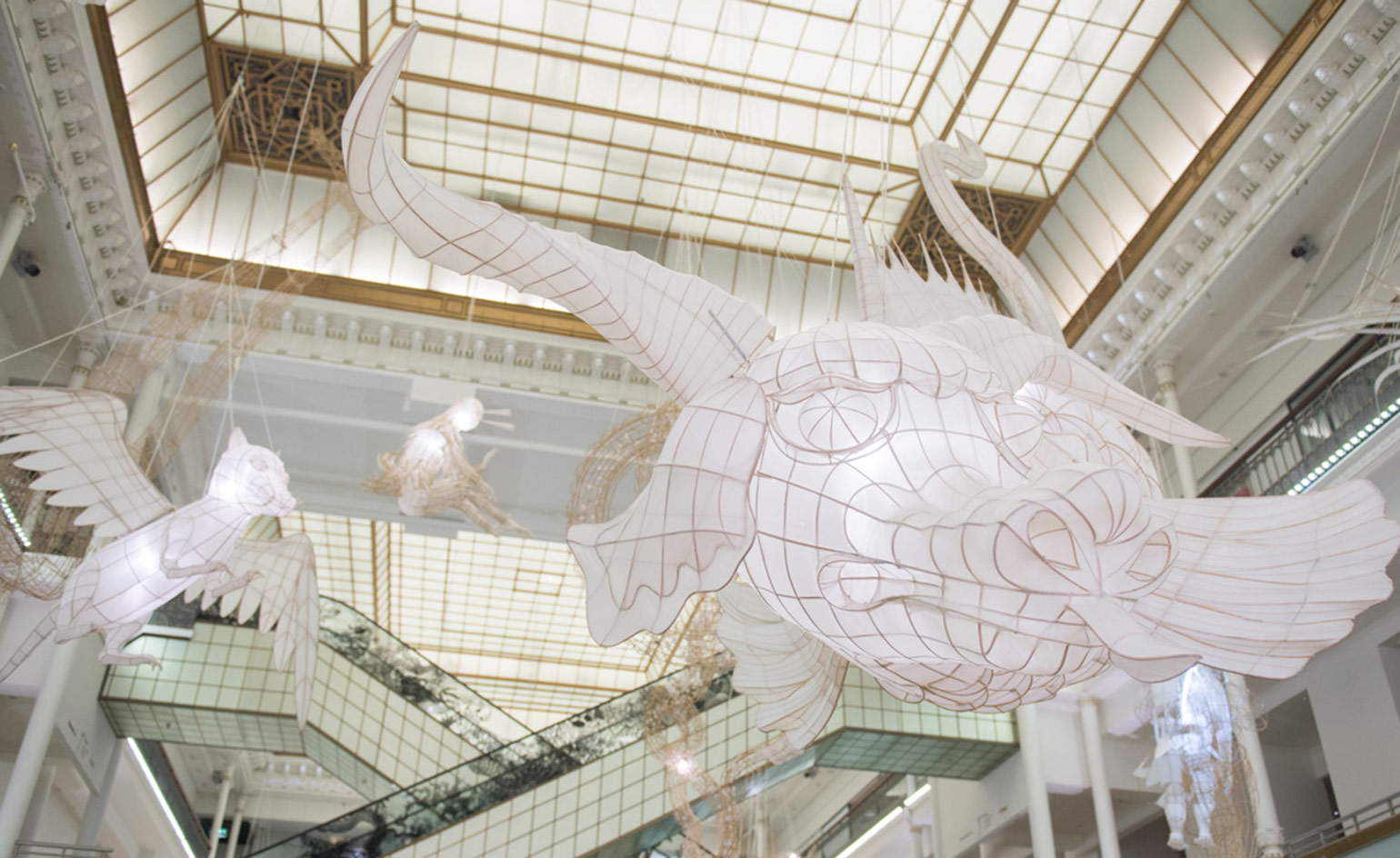
Weiwei was invited to fill the windows and the grand central atrium with creatures and multi-layered scenes, some more familiar than others. To do so, he drew both on Chinese legends and his own artistic narratives
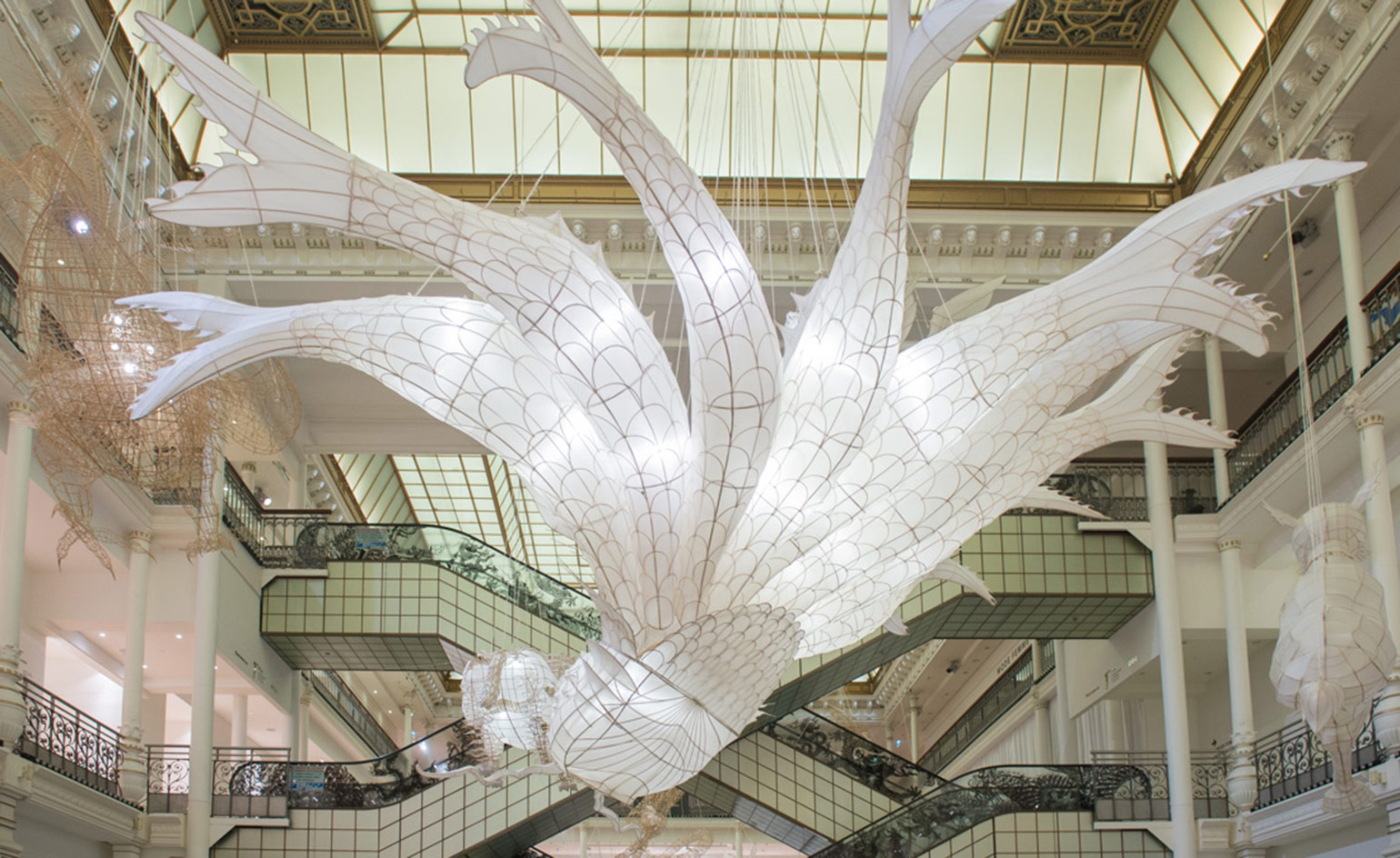
Taking place during Le Bon Marché's annual 'White Sale', the exhibition is the first that Weiwei has created in a retail space – but the exhibition functions more as a folly than a platform to provoke
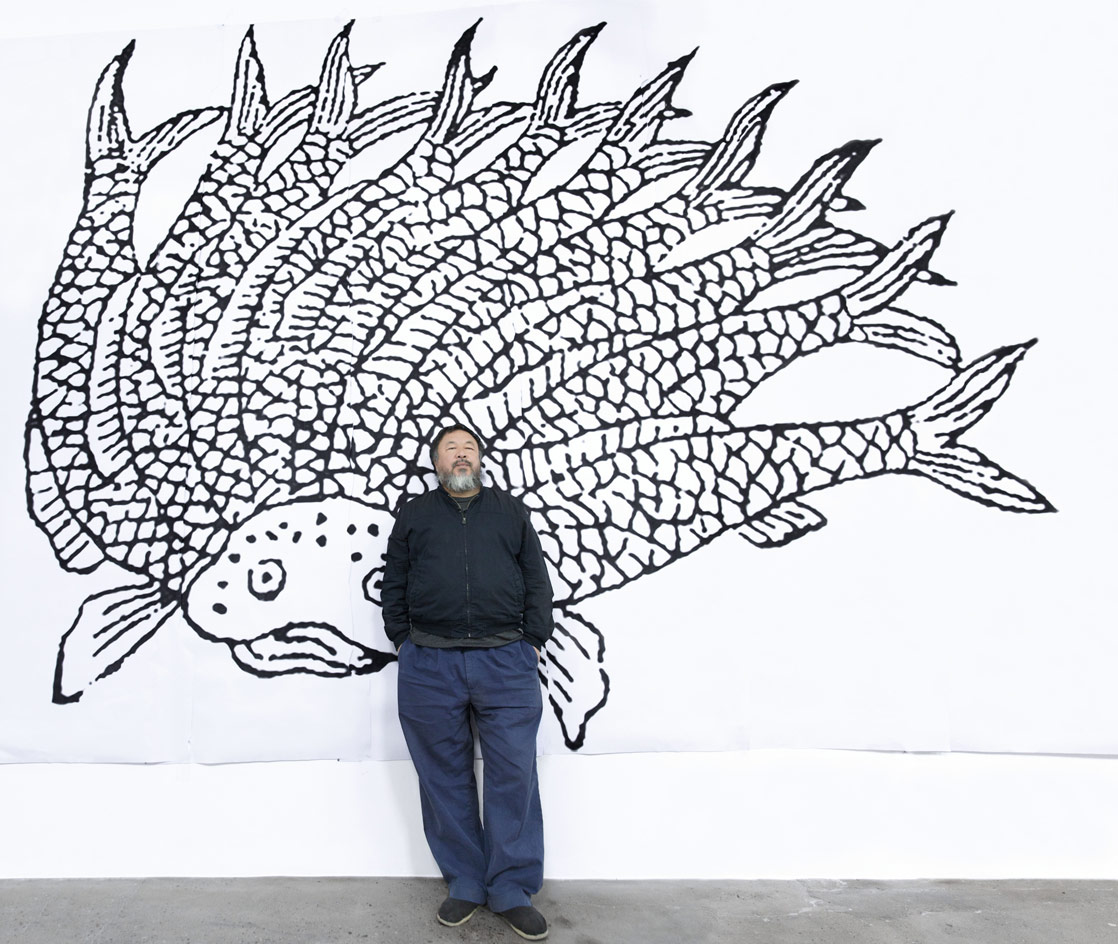
Inside the store, the great kites, structures and images represent different characters and animals from ancient Chinese mythology: turtle-fish, a fish-rooster and a serpent spirit with a human head.
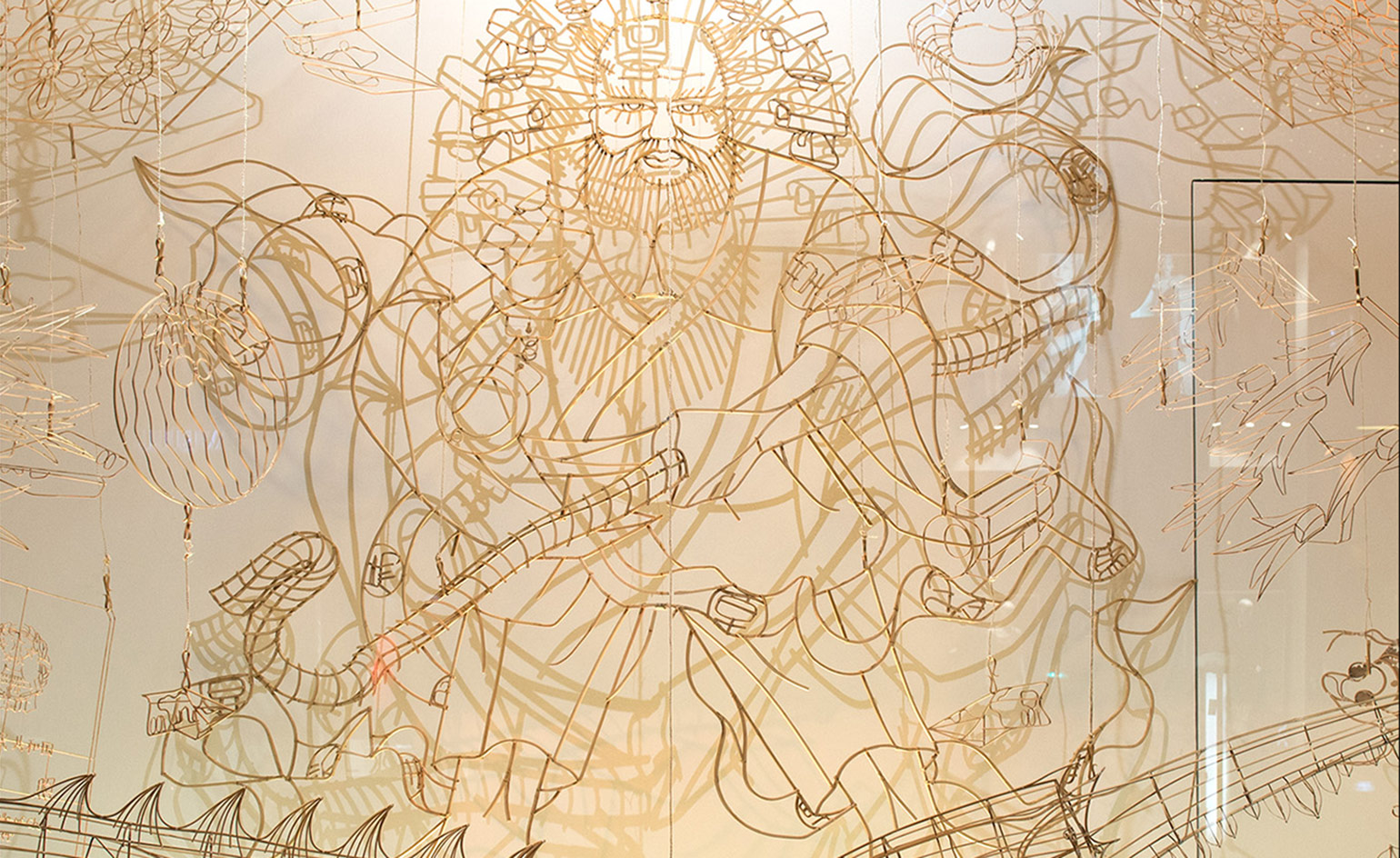
Outside, the themes are more traditionally 'Weiwei' – surveillance cameras, upturned middle fingers and bicycles
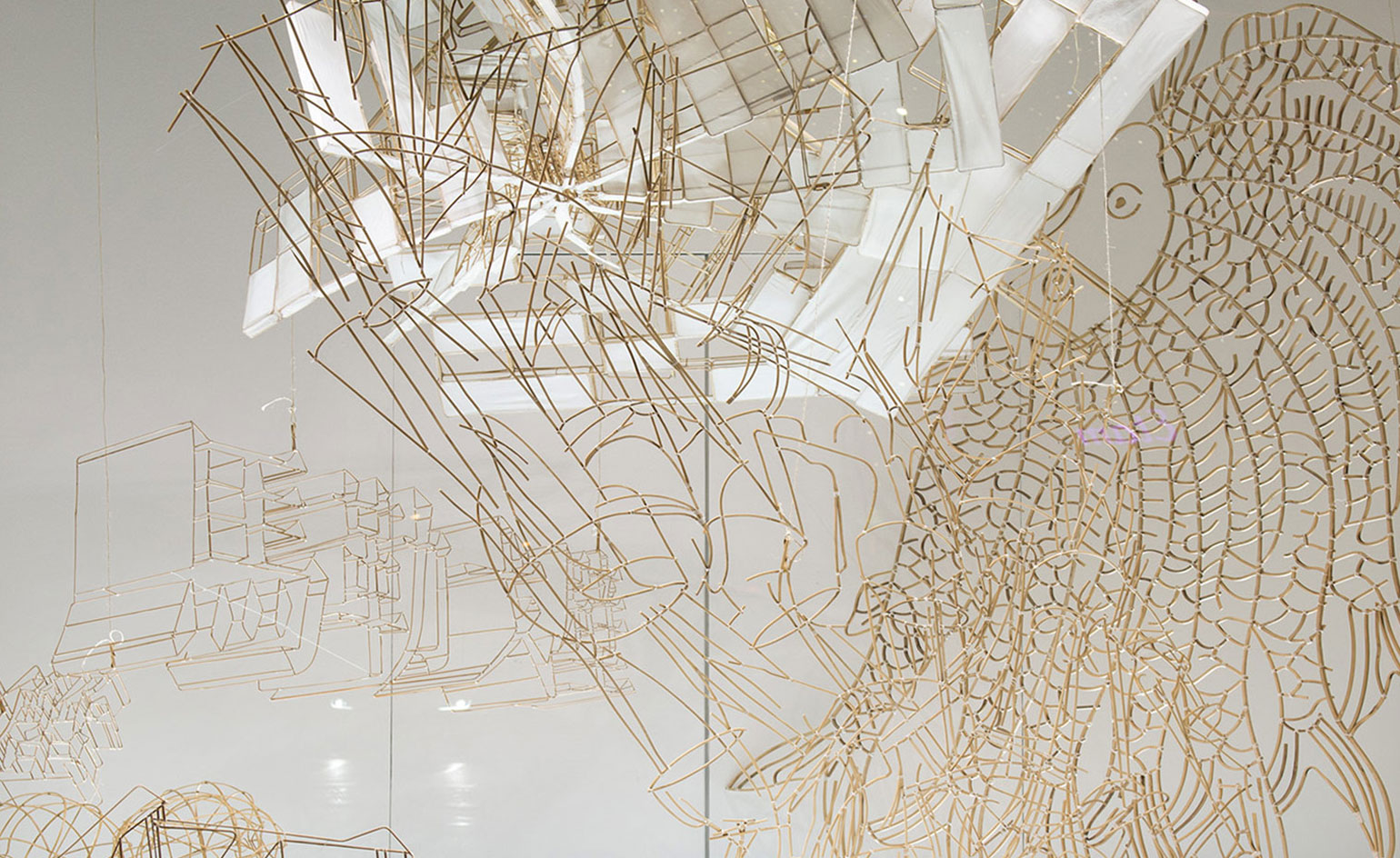
On the controversial subject of whether his subversive artwork is incongruous to the luxury consumerist surrounding, Weiwei says, 'I take a readymade like Duchamp’s and make a little taste and then it becomes something else – I think you can use these [ideas] to your benefit'
Information
'Er Xi, Air de Jeux' is on view until 20 February. For more information, visit Le Bon Marché's website
Photography courtesy Gabriel de la Chapelle
Address
Le Bon Marché
24 rue de Sèvres
75007 Paris
Receive our daily digest of inspiration, escapism and design stories from around the world direct to your inbox.
-
 Terrified to get inked? This inviting Brooklyn tattoo parlour is for people who are 'a little bit nervous'
Terrified to get inked? This inviting Brooklyn tattoo parlour is for people who are 'a little bit nervous'With minty-green walls and an option to 'call mom', Tiny Zaps' Williamsburg location was designed to tame jitters
-
 Let’s hear it for the Chopard L.U.C Grand Strike chiming watch
Let’s hear it for the Chopard L.U.C Grand Strike chiming watchThe Swiss watchmaker’s most complicated timepiece to date features an innovative approach to producing a crystal-clear sound
-
 Form... and flavour? The best design-led restaurant debuts of 2025
Form... and flavour? The best design-led restaurant debuts of 2025A Wallpaper* edit of the restaurant interiors that shaped how we ate, gathered and lingered this year
-
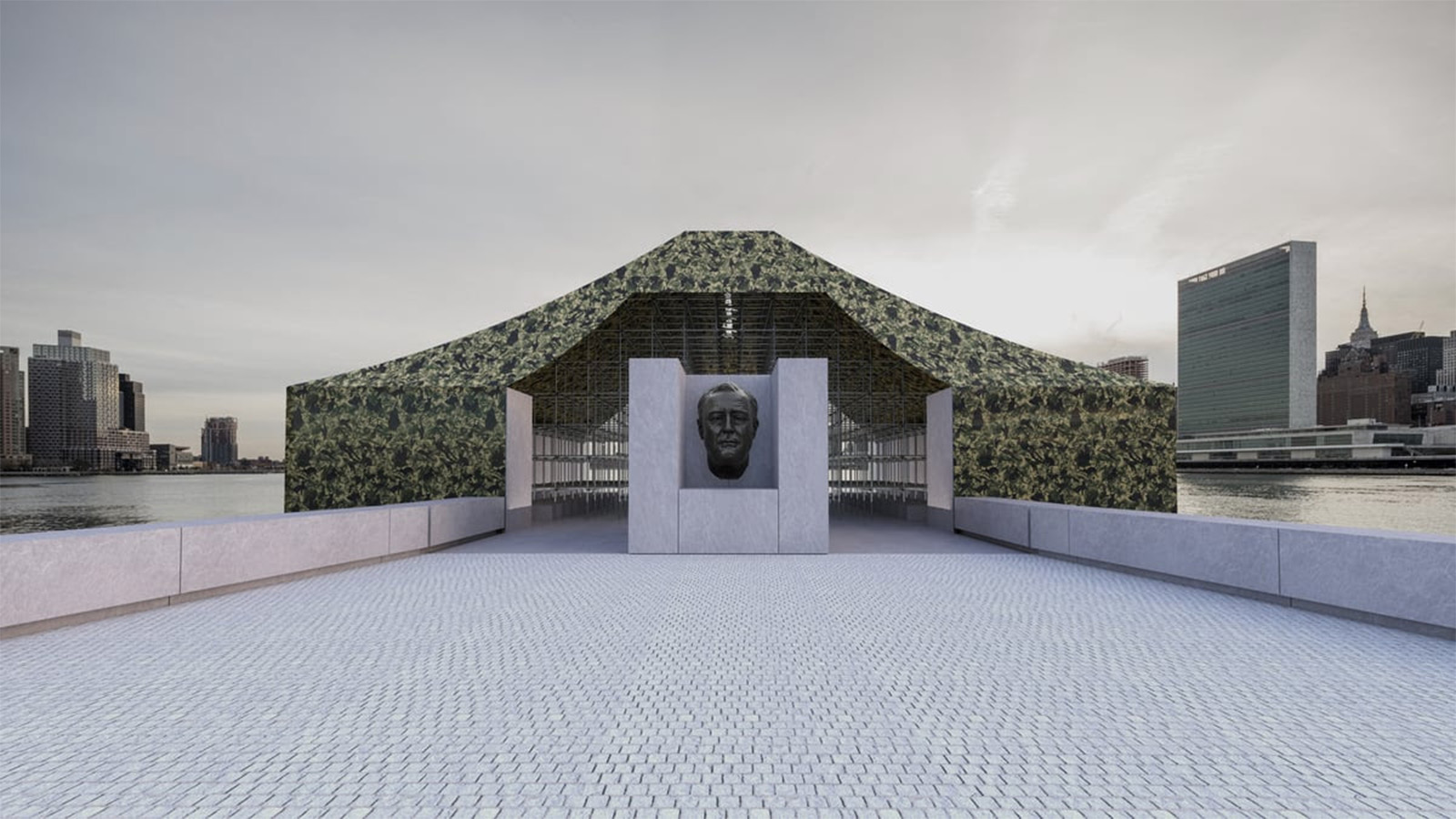 Ai Weiwei’s new public installation is coming soon to Four Freedoms State Park
Ai Weiwei’s new public installation is coming soon to Four Freedoms State Park‘Camouflage’ by Ai Weiwei will launch the inaugural Art X Freedom project in September 2025, a new programme to investigate social justice and freedom
-
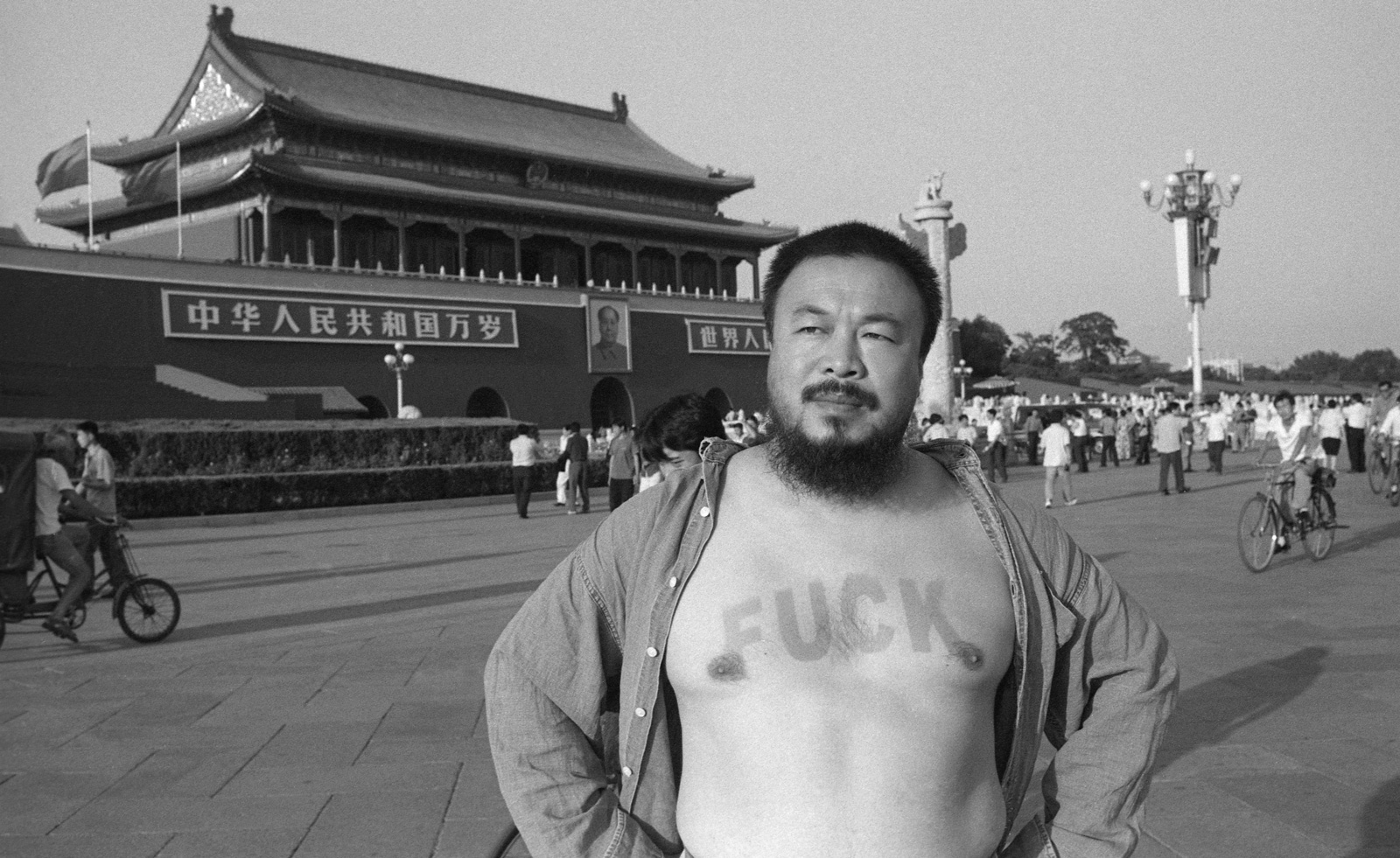 Ai Weiwei's major retrospective in Seattle is a timely and provocative exploration of human rights
Ai Weiwei's major retrospective in Seattle is a timely and provocative exploration of human rights'Ai, Rebel: The Art and Activism' of Ai Weiwei is on now at the Seattle Art Museum
-
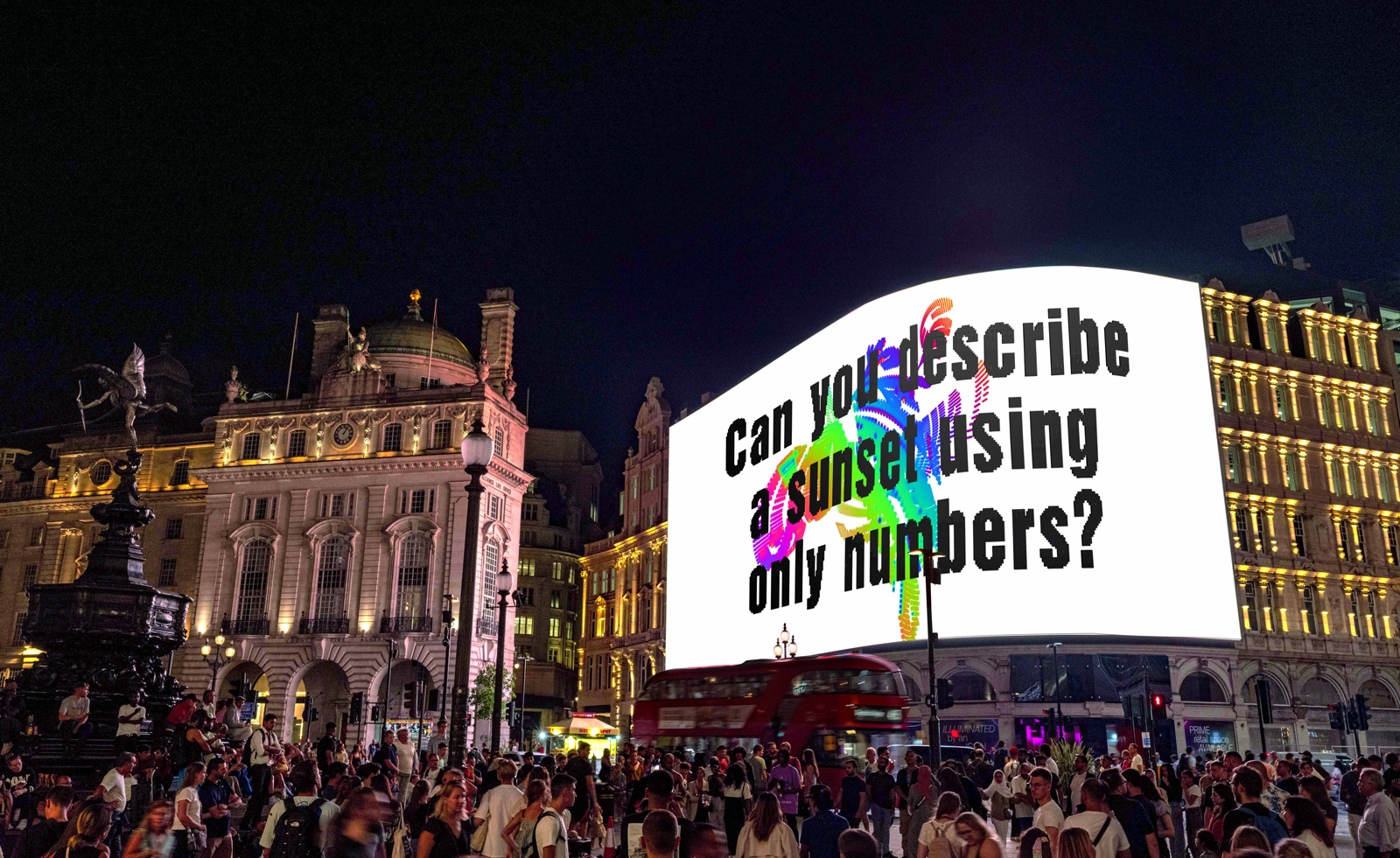 Ai vs AI: Ai Weiwei asks the big questions nightly in central London
Ai vs AI: Ai Weiwei asks the big questions nightly in central LondonAi Weiwei and Circa consider the role of the question in Piccadilly Circus, London
-
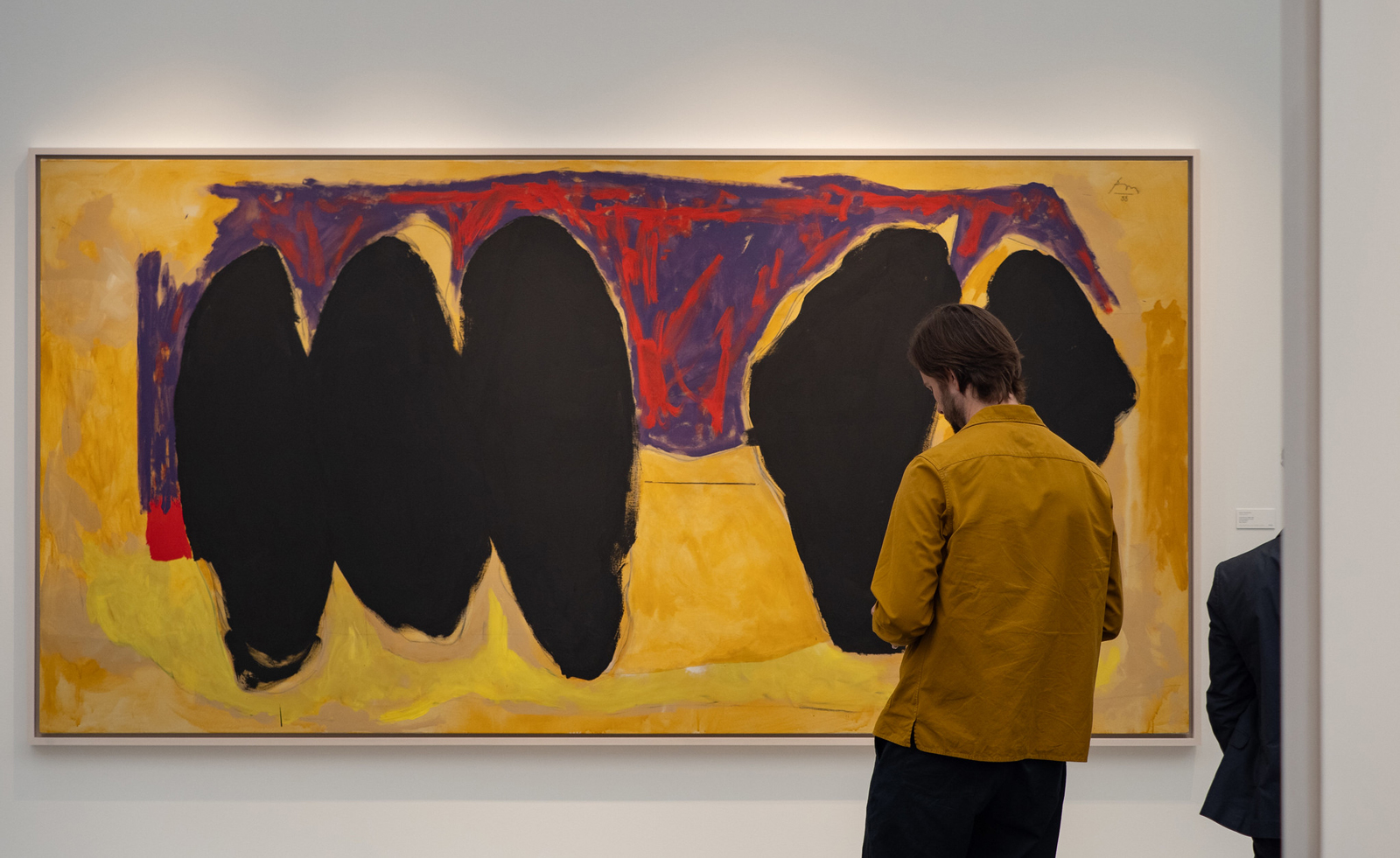 Frieze London 2023: what to see and do
Frieze London 2023: what to see and doEverything you want to see at Frieze London 2023 and around the city in our frequently updated guide
-
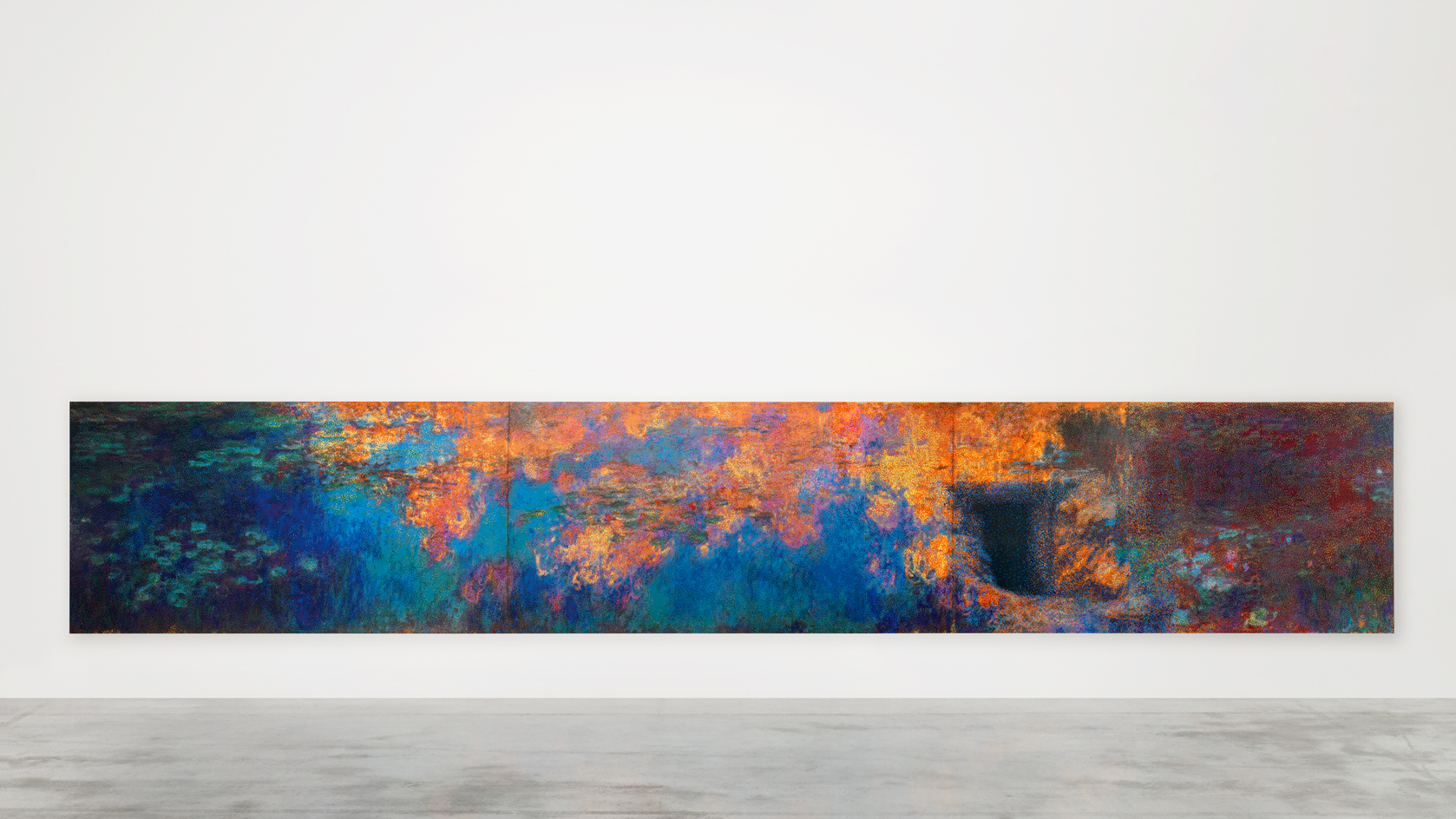 Ai Weiwei's largest-ever Lego artwork revealed at London’s Design Museum
Ai Weiwei's largest-ever Lego artwork revealed at London’s Design MuseumAt London’s Design Museum, Ai Weiwei has unveiled Water Lilies #1, a new Lego recreation of Claude Monet’s iconic painting. We explore the vast new work ahead of the Chinese artist’s major show at the museum until 30 July
-
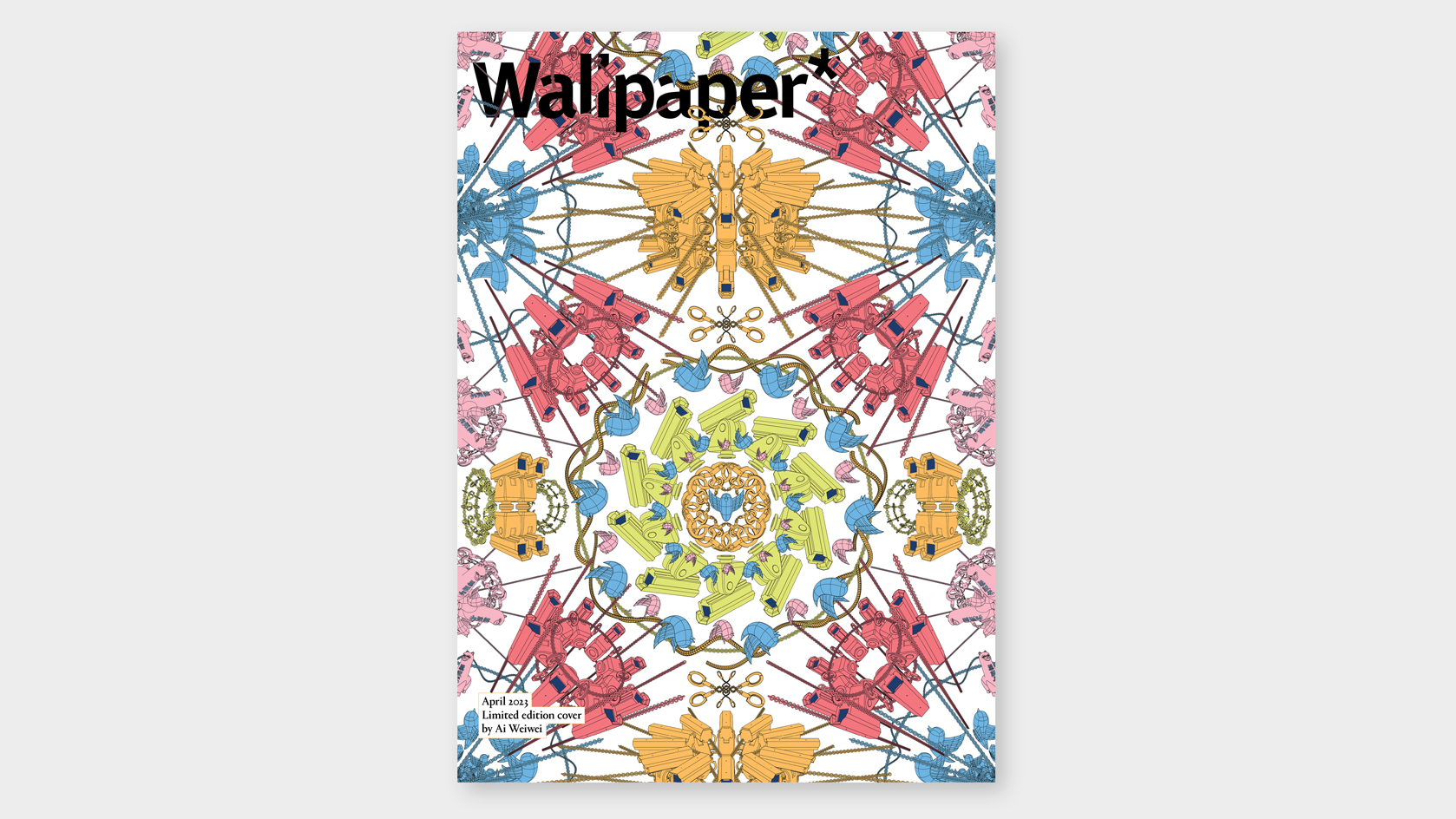 Ai Weiwei’s limited-edition cover for Wallpaper* explores surveillance, free speech, and humour as activism
Ai Weiwei’s limited-edition cover for Wallpaper* explores surveillance, free speech, and humour as activismAi Weiwei takes over the limited-edition cover of the April 2023 issue of Wallpaper*. Ahead of the artist's major Design Museum show on 7 April, we explore the story behind the cover
-
 Ai Weiwei to sign blank sheets of paper with UV ink for Refugees International in London this weekend
Ai Weiwei to sign blank sheets of paper with UV ink for Refugees International in London this weekendTo mark Human Rights Day (10 December 2022), Ai Weiwei will take to Speakers' Corner in Hyde Park to sign sheets of A4 paper in UV ink, distributed free. We interview the artist to find out more
-
 Tomorrow’s Tigers: new rugs by Ai Weiwei, Peter Doig and more set for roaring success in charity exhibition
Tomorrow’s Tigers: new rugs by Ai Weiwei, Peter Doig and more set for roaring success in charity exhibitionIncluding new designs by Ai Weiwei, Peter Doig, Kiki Smith, and Anish Kapoor, Tomorrow’s Tigers 2022 is a major fundraising project benefitting WWF